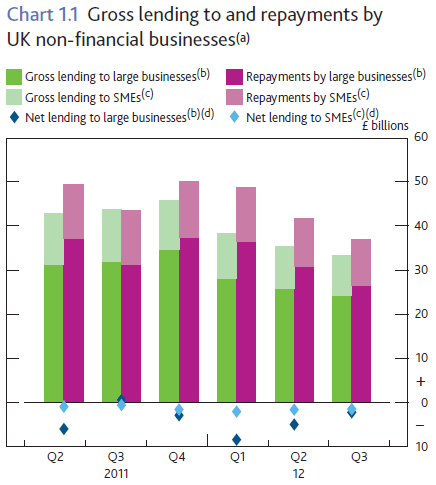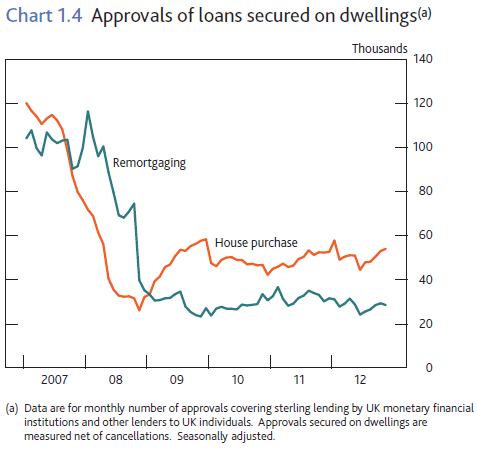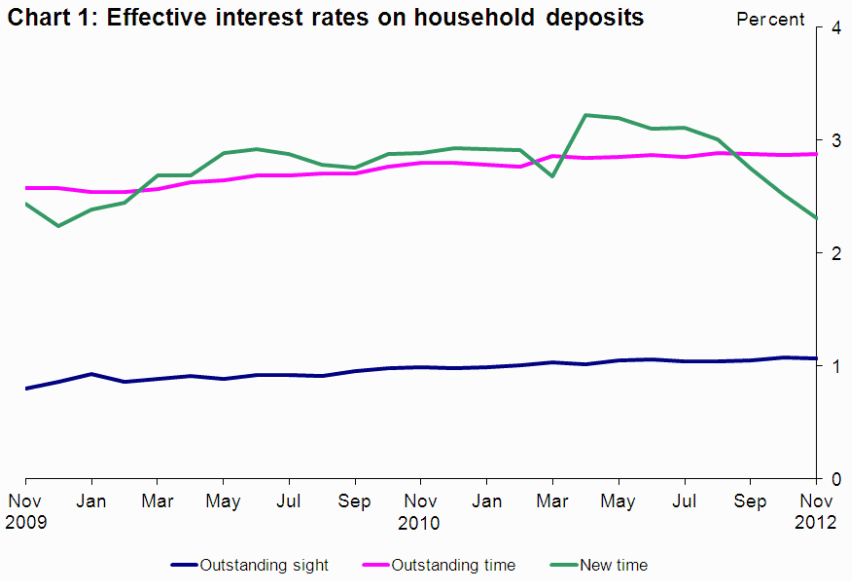
In August last year, the Bank of England (BoE) introduced a scheme entitled Funding for Lending (FFL), which is designed to improve credit conditions in the UK, particularly for small and medium-sized enterprises (SMEs).
Under the £80 billion scheme, UK banks are permitted to borrow up to 5% of the value of their outstanding loans directly from the BoE at below market rates. And if banks increase their net lending, the amount they can borrow from the Bank of England increases at the same rate.
The idea behind the FFL scheme is that if the BoE can lower bank funding costs, then the banks will in turn lower rates for borrowers. However, as is now being discovered, there is no mechanism under the FFL to ensure that banks pass-on the reduction in their funding costs to borrowers.
Data released earlier in the week by the BoE suggests that the FFL scheme is failing.
According to the BoE, the stock of lending to businesses by all UK-resident banks and building societies fell by around £4 billion in the three months to November 2012, with the annual rate of growth in the stock of lending to businesses also negative in the three months to November (see next chart).

While business lending continues to contract at a rate of knots, the FFL scheme does appear to have stimulated mortgage lending, which rose in the three months to November (see next chart).

Moreover, the Council for Mortgage Lending (CML) has forecast a near 10% rise in lending for 2013 to £156bn, from £143bn last year, citing the FFL scheme as a “key reason” for the more positive outlook.. If the CML forecasts prove correct, lending would be at its highest level since 2008.
The FFL scheme is, however, proving problematic for UK savers. By providing an alternative source of funding to customer deposits, savings rates have been slashed since the FFS’s introduction in August. As shown by the below BoE chart, rates on new time (term) deposits fell from 3.01% in August to only 2.31% in November:

To make matters worse, the spread between the price UK banks borrow money at and the rate that they lend money at has widened since the FFL scheme was introduced, suggesting that savers are being punished without borrowers receiving commensurate rewards.
So far, FFL seems to have been tentatively successful in re-inflating the UK housing market, albeit at a steep cost to savers. It has also been next to useless in reviving the languishing business sector, which is the scheme’s intended target and the lifeblood of the UK economy.
There are lessons here for Australia.

